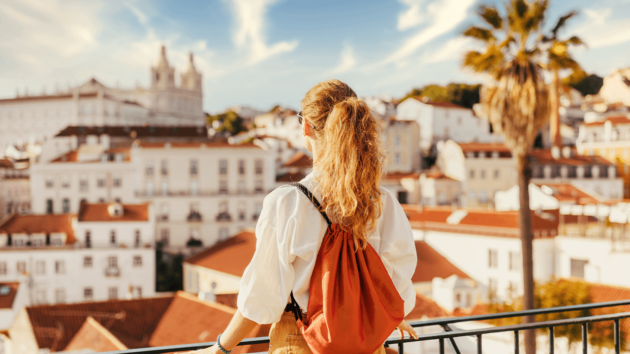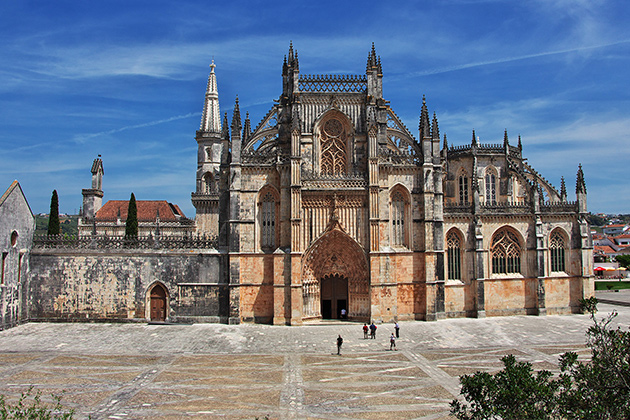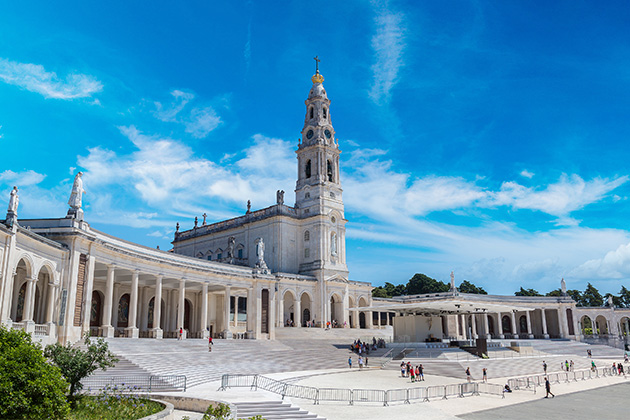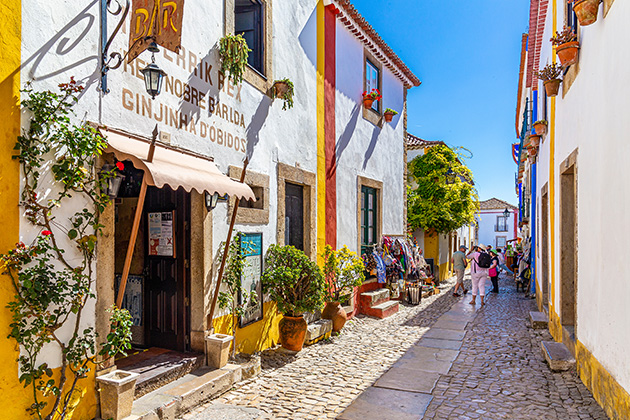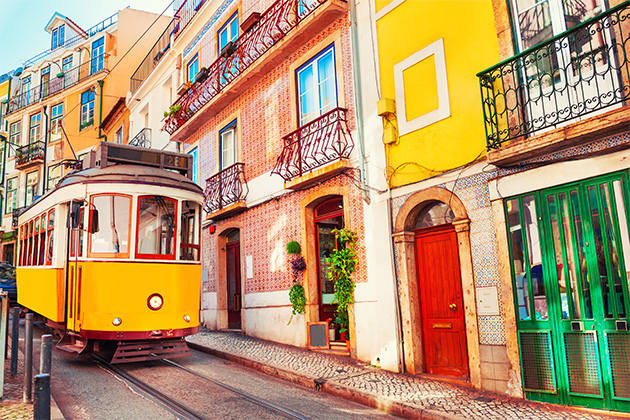
The relatively small size of the territory means that you’ll be able to better appreciate the surprising diversity of the geography, the landscape, the people, the customs and traditions. Follow our guide to holidays in Portugal so that you don’t miss any of what the country has to offer.
The Minho
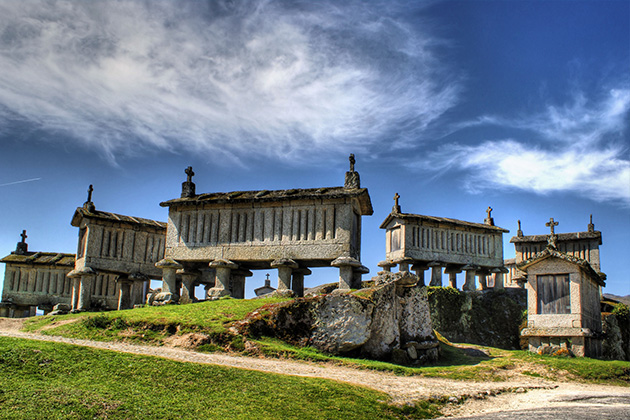
This is where it all began. By that, of course, we mean the foundation of Portugal itself, so you’ll not want to miss out. The North is currently one of the most sought-after holiday destinations in Portugal, not only because of its natural beauty but also because of its rich history and its people, the cuisine and the traditions that have survived the test of time.
Make sure to visit the Peneda-Gerês National Park, the only protected landscape in Portugal that is classified as a National Park, a natural paradise that ensures tranquility and all the relaxation you need.
Visit the thermal baths to replenish your soul and delight in the local cuisine, such as roasted veal and veal cutlets. Take some honey, biscuits, tea liqueur, cheese and cornbread home with you. Visit the submerged village of Vilarinho das Furnas, climb up to the Pedra Bela belvedere and let yourself be overwhelmed by the Gerês landscape.
Visit the granaries in the village of Soajo, classified as Buildings of Public Interest since 1983 and go to the medieval Lindoso Castle.
As far as cities are concerned, Braga, Guimarães and Viana do Castelo are the main points of interest in the region. The first one is known for the Bom Jesus do Monte Shrine, whereas Guimarães is a world heritage site and played a crucial role in the foundation of Portugal, making it a must.
The charm of Viana do Castelo lies in its architecture, history and traditions, amongst which we would highlight the Pilgrimage of Our Lady of Agony.
Trás-os-Montes and the Upper Douro
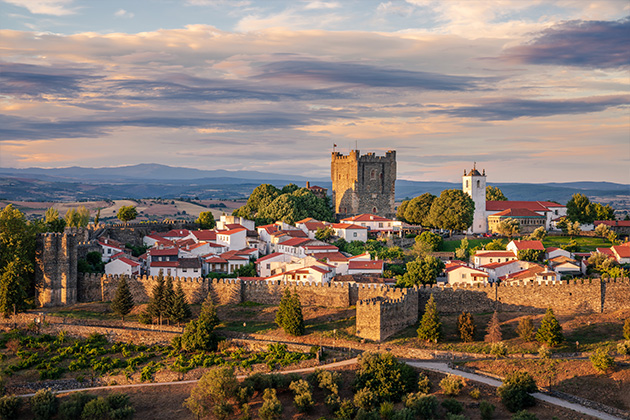
When you visit Trás-os-Montes you absolutely have to go to the characteristically medieval looking Pitões das Júnias, as well as to Montesinho and Chaves. Make sure to see the Mateus Palace and the Cathedral in Vila Real and, just 30 km away, the Pedras Salgadas Thermal Park.
Bragança’s highlights are the castle, the historical centre and the view over the Montesinho, Sanabria, Rebordões and Nogueira hills.
The wonderful Douro region, considered by many to be the most beautiful in the world, merits a stopover. It’s worth buying a seat on one of the boat trips up and down the Douro. In Régua, the capital of the Douro wine region, go to the São Leonardo Belvedere, the Sete Esquinas Chapel and the Roman town of Alto da Fonte do Milho.
A train ride along the Douro Line will give you a unique perspective of the region, as will a visit to the winery and the vineyards of Sandeman’s Quinta do Seixo, for a glass of Port.
We also recommend a visit to the Symington family’s Quinta do Bonfim for a breathtaking view over the Upper Douro Wine region while enjoying a lovely glass of wine. When you get hungry try the oven roasted kid and the local cavacas pastries.
Coastal Douro
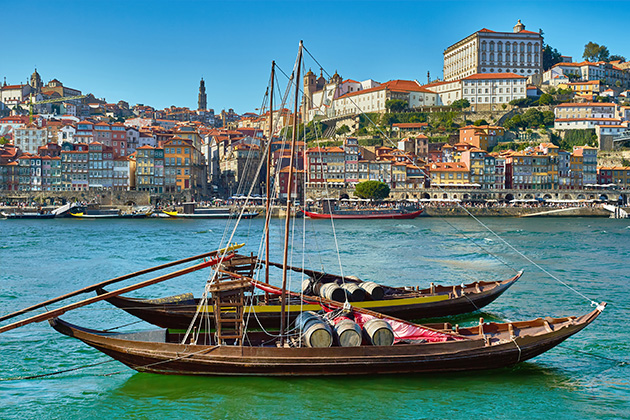
With famous cities such as Porto, the Coastal Douro region is one of those tourist destinations where you can find a bit of everything. From the best beaches in the north to the second most important city in Portugal and rural traditions.
Head over to Porto to learn why this is such a seductive city that is so difficult to say goodbye to.
Beira Alta
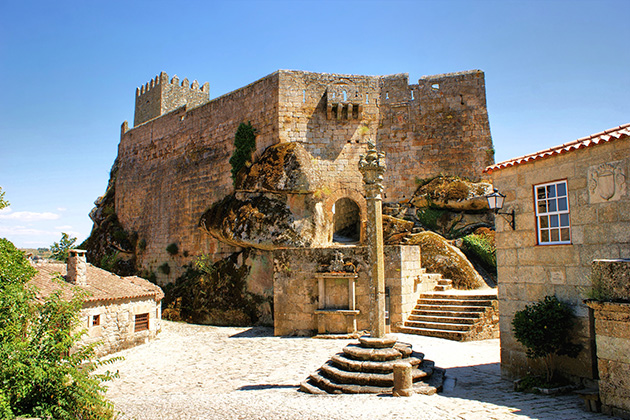
If you are in the Beira Alta region we recommend you visit Guarda and Viseu. In the city of Guarda you can’t miss out on a trip to Sortelha, one of the oldest and most beautiful Portuguese spots in Portugal, classified as an Historic Portuguese Village.
With its traditional 12-pointed star shape, the Fortress of Almeida is an impressive example of a XVII Century defensive system and Vila Nova de Foz Coa has the largest collection of open air paleolithic carvings. In Marialva you’ll find an historic village which is considered a living relic of Portuguese heritage.
If you’re in the mood for something more radical, and weather permitting, you can try paragliding in Linhares da Beira to get a bird’s-eye view of the whole region.
Next comes Seia, the gateway to the famous Estrela mountain, which is covered with snow in winter and boasts the delicious Serra cheese. The river beaches are worth a visit and you must see the castle, the cathedral and the tile-covered São Vicente Church in Guarda.
Further south you’ll find Viseu. This is the land of Lusitanian hero Viriato and, according to some academics, the birthplace of the first King of Portugal. It is also a land of traditions, where time seems to have stood still.
You can’t miss a visit to the Church of the Third Order of Saint Francis, right next to the Aquilino Ribeiro Park, and then follow through to the Rossio, where we advise you to sit in the Praça da República and take in the atmosphere. The Cathedral and the Misericórdia Church are a symbol of Viseu, and a must, as is the Grão Vasco Museum.
And nothing better than a ride on the funicular, enjoying the fresh air and building up an appetite for Lafões style roasted veal or roasted kid. Wash these down with a nice Dão wine and then try a bean pastry and the traditional sweet chestnuts.
Beira Litoral
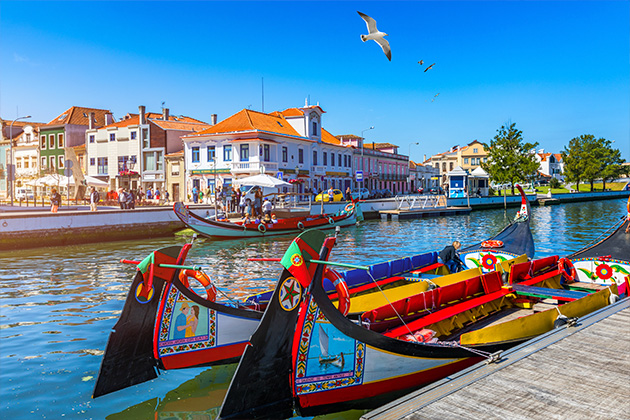
Aveiro is known as the “Portuguese Venice” and once you’re there you’ll want to visit the São Jacinto Dunes Nature Reserve and the Costa Nova Beach, where you can see the traditional fishermen’s houses, painted in vertical stripes of different colours.
There is a lovely ecological trail that you can walk or bike down and a wooden walkway that goes past the marvelous Aveiro estuary. And, of course, you can’t leave town without fulfilling tradition and tasting the fantastic ovos moles.
Coimbra, another city to see in the region, is a very promising and interesting destination for a holiday in Portugal. Located along the margins of the Mondego River, it is home to the oldest university in Portugal, one of the oldest in Europe.
It is known as the students’ city and the truth is that the youthful cheerfulness on display in most of its streets is quite contagious. So, do make sure to visit the University, which is a world heritage site, as well as the Santa Clara Monastery and the Machado de Castro National Museum and also make sure to listen to the Coimbra style fado, always more charming in Coimbra itself.
The Quinta das Lágrimas, where Prince D. Pedro and Inês de Castro lived out their famous and tragic romance, is another reference you’ll want to see, as is Portugal dos Pequenitos, the old park where Portugal’s main monuments are reproduced in kid-size.
Once these sites have been checked off your list its time to head down to Leiria where Portugal’s first courts were gathered and where famed writer Eça de Queiroz supposedly set his classic novel “The Crime of Father Amaro”. Visit the imposing castle, the Church of Nossa Senhora da Pena, the Royal Palace and the Cathedral and then take a stroll though the Rodrigues Lobo Square, the heart of the city, to appreciate the bustle and charm of this unforgettable city.
Nearby you can also visit the Alcobaça and Aljubarrota monasteries and make your way to Fátima, home to the shrine of Our Lady who appeared to the Three Shepherd children in 1917. You’re also quite close to Nazaré, where you can find one of the best beaches in the country.
Beira Baixa
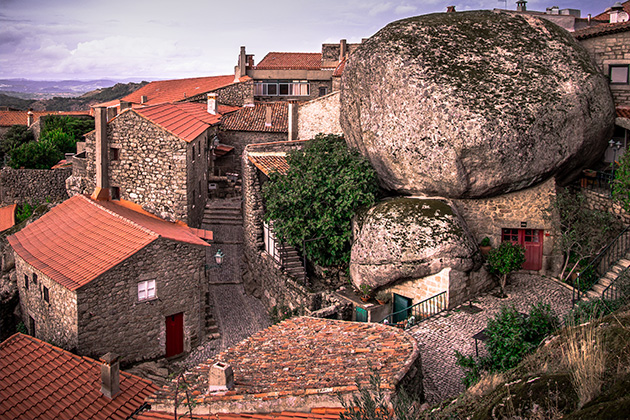
The Beira Baixa region is home to Monsanto, in Idanha-a-Nova, famous for having won the title of the most Portuguese village in Portugal, a must on any checklist.
In Castelo Branco take a stroll through the gardens of the Bishop’s Palace and climb up to the castle to admire the view, making sure to see the famous bedspreads with their intricate needlework.
Belmonte, one of the most historical villages in Portugal, is the birthplace of navigator Pedro Álvares Cabral and is known for its strong Jewish presence. We recommend a visit to the old council chambers, the castle, the art nouveau houses, the Main Church, the Jewish quarter, the Olive Oil Museum and the Jewish Museum.
Ribatejo
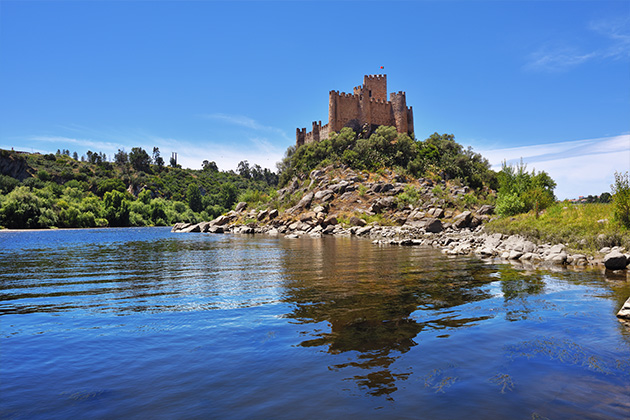
Santarém is the Gothic capital of Portugal and another part of the country that merits a visit – stroll through the historic centre and let yourself be overwhelmed by the fine architecture. From there make your way to Constância, once home to national poet Luís de Camões, and if the weather is nice take a dive in the river beach just where the Zêzere meets the Tagus.
In Ferreira do Zêzere the highlights are the water tourism, the landscapes and the nature tourism. We recommend a visit to Dornes, one of the most beautiful and best-preserved towns in Portugal. When its time to eat you can’t go wrong with the wild boar and the suckling pig. If seafood is your thing, then try the crayfish and finish it off with a sweet tigelada.
The former headquarters of the Templar Order, Tomar is a city that charms because of its rich artistic and cultural heritage, the best example of which is the Convento de Cristo, one of Portugal’s finest works from the Renaissance period. Every four years the city hosts the magnificent Tabuleiros Festival.
Make sure not to miss a hike through the Sete Montes Woods and visit the old synagogue and the Almourol Castle, finishing it all off with a treat of fatias de Tomar. And don’t think of leaving the Ribatejo without visiting Golegã, famous for its National Horse Fair, that has taken place every year in November since the XVII Century, around the day of St. Martin.
And to add some colour to your holiday, stop by the Carlos Relvas Studios House to appreciate the work of one of the fathers of Portuguese photography in the XIX Century.
Estremadura
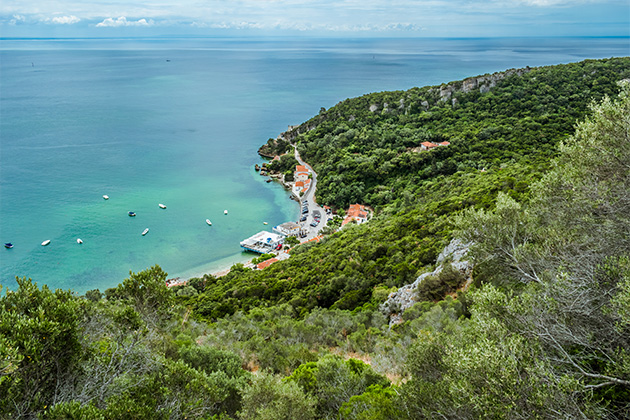
There is more to it, but a large part of Estremadura is Lisbon. And the fact is that this is an absolutely marvelous city, built on seven hills overlooking the Tagus.
There is a certain aura of mystery to Portugal’s capital that is difficult to find anywhere else in the world and makes for a great choice for a holiday. Further South, across the Tagus, you’ll find Setúbal where your best option is just to wander around the city.
We recommend the Livramento Market, one of the best in the world for buying fish, which takes place in a 1930s art déco building, the interior of which is covered in tiles which alone make the visit worth your while.
Setúbal is the birthplace of Luísa Todi and Bocage and both these literary figures are prominent, with a large avenue named after the former and a square after the latter, both of which also merit a visit.
Make sure to check out the Cathedral and the Santa Maria da Graça Church and take in the view from the São Sebastião Belvedere, from where you can see the aqueduct and the Chafariz do Sapal.
In the vicinity of Setúbal there is a lovely region just waiting to be discovered, from Sesimbra to Arrábida and Azeitão. Don’t miss out on a boat ride in the Sado Estuary Nature Reserve and, if you’re lucky, you might just see the dolphins that sometimes swim up close to the boats.
Enjoy beaches like Figueirinha, Portinho da Arrábida, Pedra da Anixa, Praia dos Coelhos, Comenda or Rasca and, when you sit down for a meal, go for seafood. The fried squid is to die for, but the clams and the river shrimp come up close.
Other temptations are the fish stews or casseroles and there are plenty of fine local wines to accompany them with. Cap it all off with an unforgettable torta de azeitão or an orange peel barquilho and a queijadinha de Setúbal.
Alto Alentejo
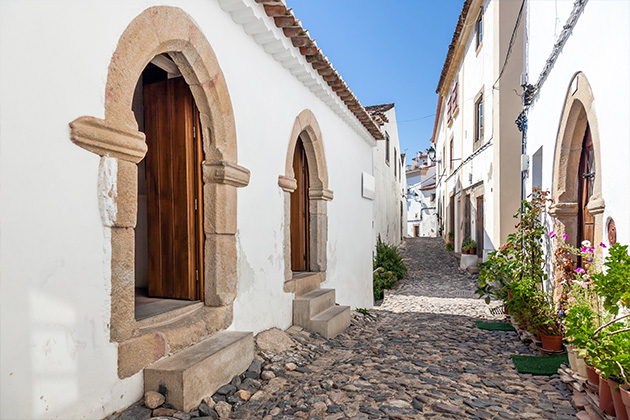
The crown jewel of the Upper Alentejo region is the city of Évora. Some call it the capital of the Alentejo and it boasts one of the most beautiful and well preserved historic centres in the world in terms of monuments, having been declared Unesco world heritage in 1986.
You’ll have to visit the Roman Temple, the Cathedral and the São Francisco Church, as well as the Bone Chapel, D. Manuel’s Palace and the Lóios Convent.
After all of this you’ll enjoy sitting and relaxing in the Giraldo square, where you can appreciate the rare vitality of an Alentejo city that exudes youth, largely thanks to a university that keeps the youngsters coming in year after year.
There are other cities and towns in the same district that will stay with you forever, such as Arraiolos, Portel, Monsaraz and Vila Viçosa, from where King Dom Carlos was returning, following a hunting trip, as he did every winter, when he was murdered.
Portalegre, the other Upper Alentejo district, also has some lovely landmarks, beginning with Alter do Chão, a town known for its tradition of Portuguese horsemanship, created in 1748 by King D. João V.
The same goes for Castelo de Vide, affectionately known as Sintra of the Alentejo by King D. Pedro V, due to the proximity of the São Mamede Mountain, its mild climate and intense vegetation.
If you have time, we also recommend you visit the Marvão Castle, Avis, Elvas and Campo Maior, especially during the period of its traditional Festa do Povo which fills the town with paper flowers. Portalegre itself is a medieval city where time seems to have stood still in the narrow alleys of its historic centre.
It is known for its fine local tapestries and boasts a lovely Cathedral, the José Régio House Museum, where the author spent most of his life, as well as the São Francisco Convent, the Robinson Cork Factory and the Santa Clara Convent.
The number of convents is a good sign, since these were always accompanied by a rich tradition of Portuguese sweets. Try the lampreia de Portalegre, the toucinho do céu, almond sponge cake or the manjar branco.
Lower Alentejo
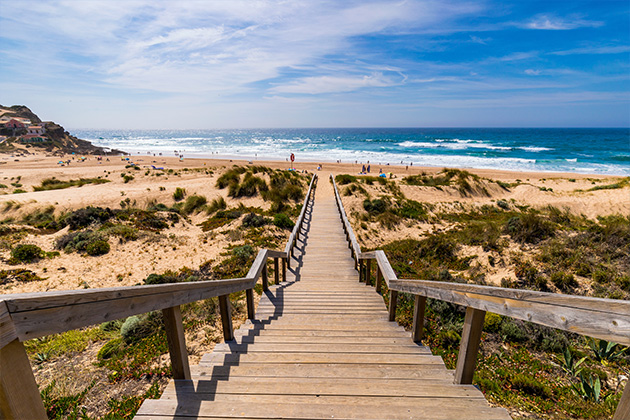
Even if you don’t take into account its beaches, the Lower Alentejo region has all you need for a spectacular holiday. An example is Odemira, with its view over the Southeastern Alentejo and Vicentine Coast Natural Park and surroundings that go from plain, to mountain and sea.
The Lower Alentejo is a land of endless horizons and known for the production of beef, ovine and pork, where you can just as easily spot a rabbit, a hare, a partridge or a wild boar. The land is rich in cork, olives, wheat and fruit, as well as lovely landscapes made all the more charming by the Guadiana River.
The highlight of the Beja district is the city that lends it its name, where you can still see plenty of vestiges of the Arab occupation. The same goes for the town of Alvito where you should make a point of visiting the castle. Mértola and Ourique, founded in 711, are other sure bets and Serpa has much to offer, including friendly locals, lovely architecture and delicious cheese, wine, olive oil, traditional sausages, honey and regional sweets, not mention, of course, the delicious Alentejo bread.
The Algarve
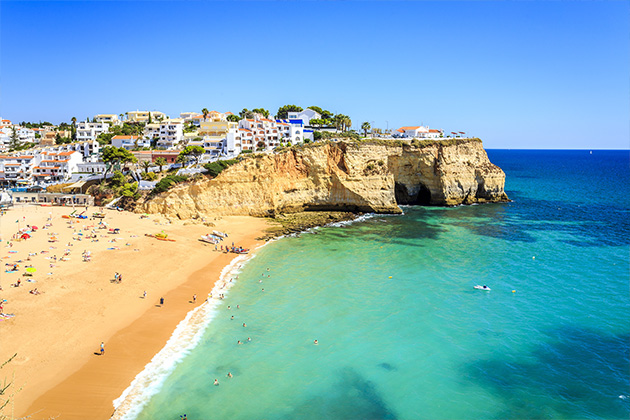
Once you’ve made it to the Algarve all you really feel like doing is taking a dive in the ocean and enjoying the water temperatures that rise progressively the closer you get to the Spanish border. There are beaches all along the coastline, as well as towns and cities that fill up with tourists in the summer, looking forward to their well-deserved holidays under the Portuguese sun.
Sagres is a favourite among a younger generation and surfers and Vila Real de Santo António, on the other end of the Algarve, very close to the Spanish city of Ayamonte, has a more diverse offering. The Albufeira region is busier and if you just want to relax, head to the sotavento.
There is more to the Algarve than just the coast. Inland you have Monchique with its famous mountain thermal springs. You can’t help but to notice the traces of Arabic presence all over the Algarve, which have been preserved until our time and which, besides their great cultural value, bestow an air of mysticism, nostalgia and charm.
Know more: Visit Açores: a guide
